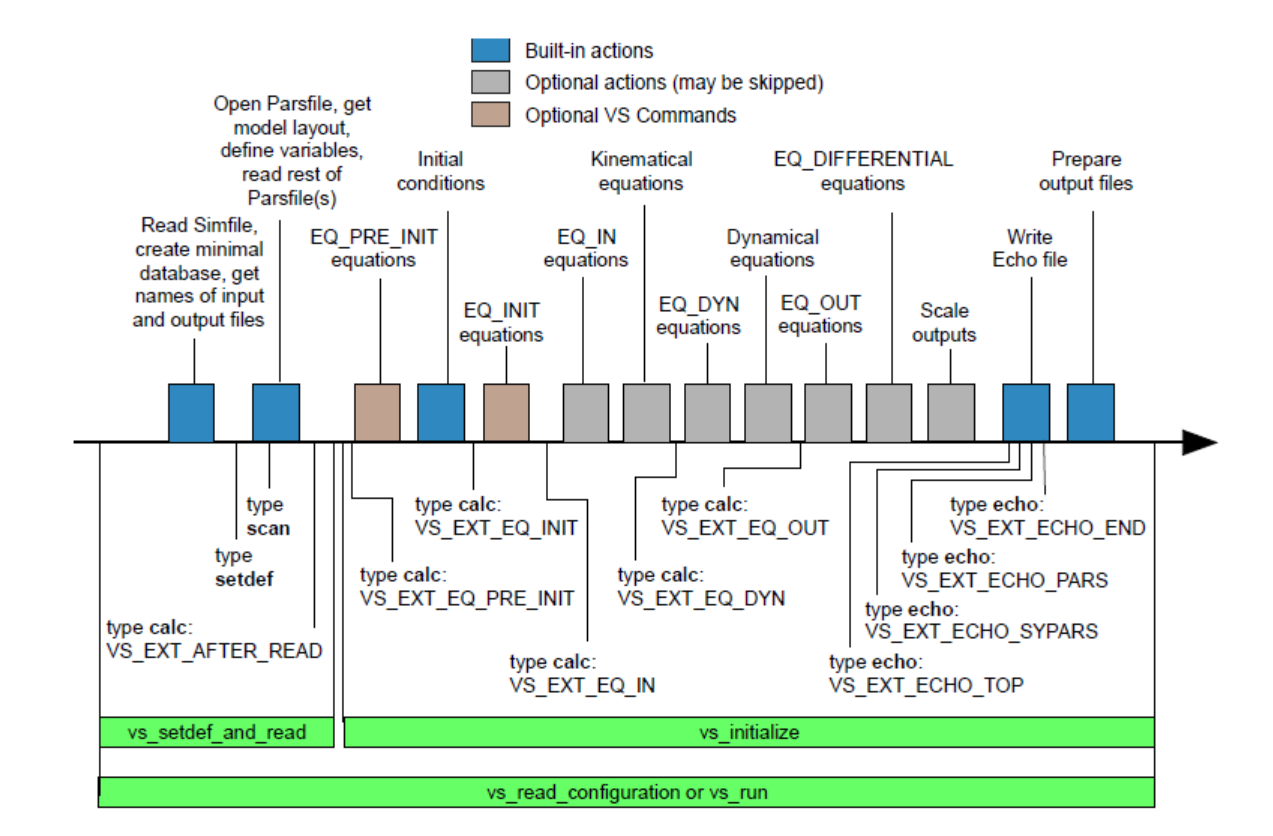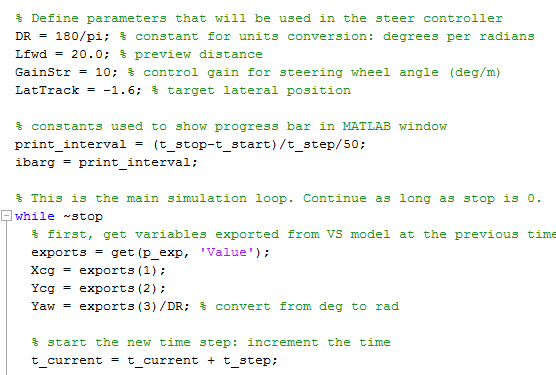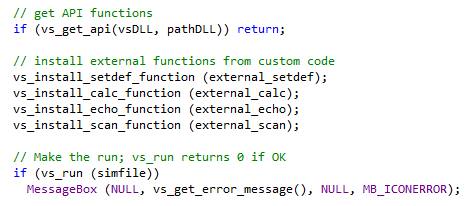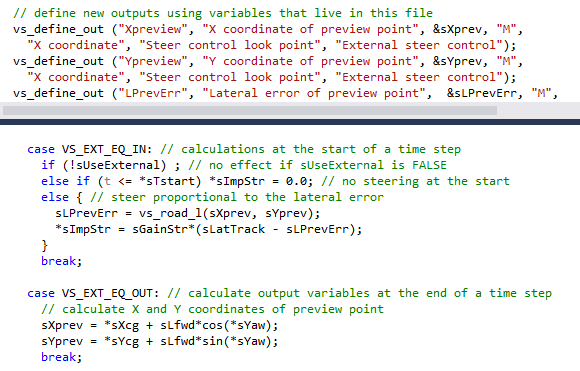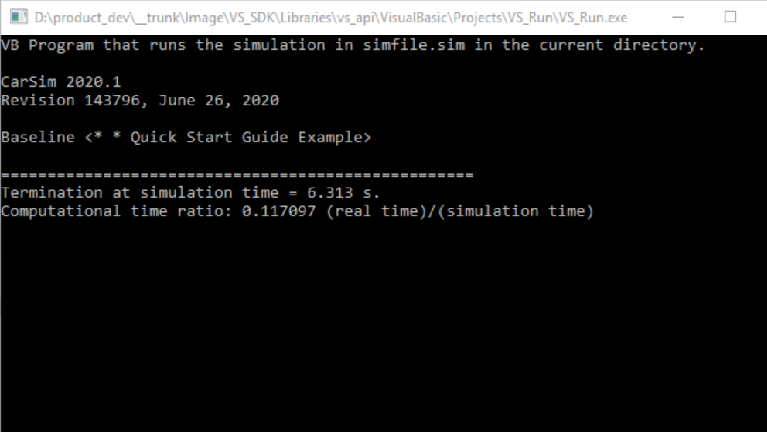VehicleSim SDK
Mechanical Simulation Corporation produces and distributes software tools for simulating and analyzing the dynamic behavior of motor vehicles in response to inputs from steering, braking, throttle, road, and aerodynamics.
The VS SDK is a Software Development Kit. This means that it includes all the tools, libraries, documentation, and example projects necessary to get working on a project with as little configuration possible. With nothing but the contents of the SDK, a valid license for a VehicleSim product, and a development environment for your language of choice you can get to work building and extending various aspects of the simulation architecture.
The VehicleSim SDK is available from the VS SDK part of the Users section of this website.
Libraries
The VS Solver library contains the API for the VS Math Model. The VS API is a set of functions that allow for direct interaction with a VS Solver instance, including adding equations at runtime, exchange of variables, and direct access to the VS Math Model.
A wrapper for the VehicleSim solvers' native interface (the VS API). It simplifies integration into other simulation environments and facilitates simulating multiple vehicle instances within the same simulation environment.
A standalone Windows DLL for generating VS Terrain files. Geometry can be fed in from the source application, with friction and rolling resistance values attached to each triangle face.
Used for facilitating communications between external programs and VehicleSim products, primarily for synchronization of simulations between multiple programs for co-simulation.
Allows an engineer to read, write, and create the same output file formats used within VehicleSim projects.
Provides access to manipulate data within table structures (.vstb files). The API allows for creating, editing, and accessing both 1-D and 2-D tables.
Facilitates interprocess transfer of image data. VS Visualizer uses this API to provide rendered data to the VS Camera Sensor S-function within Simulink.
Utilities
A command-line wrapper for basic use, loading a VS Solver dll to perform a simulation given a valid simulation input.
Multiple License Managers included with the VS SDK for use with a VS Solver. Once your licensing is properly configured, an instance of the license manager must be running before attempting to run the VS Solver.
Example Applications
VehicleSim products include example programs in Python, MATLAB, Visual Basic, and ANSI C that show how to load and run the VS Solver, and possibly use build a custom program to interact with the VS math models.
The VehicleSim suite of products can be used on high performance computing architectures, from a single computer to thousands of nodes on the cloud.
Click here to learn more
CarSim and TruckSim math models are used in over 1400 driving simulators. The makers combine third-party visualization software and databases with the VS Math Model using VS API functions.
Used by sophisticated top-tier teams to run third-party tire models, advanced damper models, detailed aero maps, and alternative engines and transmissions. CarSim engineers have worked with race teams from NASCAR, Formula 1, ALMS, and IndyCar.
VehicleSim Products
CarSimTruckSim
BikeSim
SuspensionSim
Built-In Features
ADAS: Moving Objects and SensorsAnimation and Plotting
Automation and COM
Built-In Controllers
GUI, Database, and Documentation
Modular VS Math Models
Paths and S-L Coordinates
Roads and Terrain
VS Commands Language
VS Scene Builder Tool
Co-Simulation Technologies
Real-Time HIL SupportSimulink, FMI/FMU, LabVIEW
Unreal Engine
VehicleSim SDK
More
Engineering Services